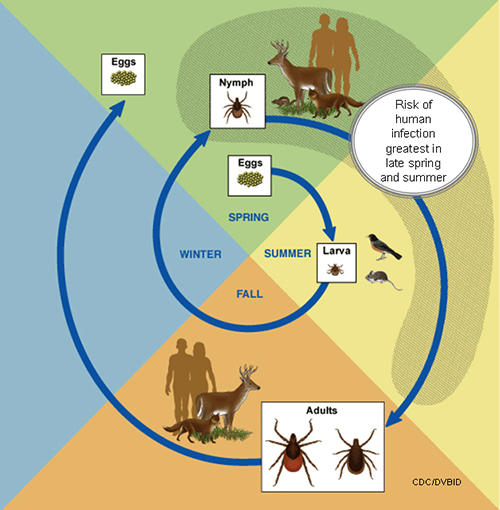Sandbox:Rina Ghorpade
"Rina Ghorpade,MD[1]" Advanced heart failure. Redirect MI Majority of cases of HGA are transmitted by two different ticks in the USA. Life cycle of I. scapularis and I. pacificus.
An adult female lay eggs in cluteches of approximate 1500-3000 eggs in spring, from egges six-legged larvae emerge. Larvae usually feed on rodent/bird blood and get infected by rickettsial parasaties usually in summer. Larvae transformed into eight legged structure calle Nymph, nymphs lie dormant in fall/winter, nymphs start feeding on deer, humans, and dogs in the next spring. Nymphs then molt into adults which aslo has eight legs, and adults find third host, these adults mate on or off a host, and once engorged and met, female adult tick a thousands of eggs in clutch before dying.
[[2]]
